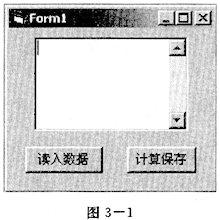The produce departments of the future may look like nothing on earth, and with good reason. Chinese scientists have been growing tomatoes the size of softballs, cucumbers as long as baseball bats and other outsize fruits and vegetables, using seeds that have been shot into space. The seeds are then exposed to seven types of extraterrestrial conditions, from zero gravity and cosmic radiation to subatomic particles. (46) As these space veggies grow back on earth, they are selected for desirable traits--bulk, appearance or certain nutrients--then bred through successive generations to ensure that the mutations are consistent.
Chinese scientists don’t understand exactly how a trip into space alters the seeds’ DNA and yields such effects, but it’s not just size that changes. (47) Tong Yichao, whose firm, the Beijing Flying Eagle Green Foods Group, has been sending seeds and seedlings aboard Chinese spacecraft since 1999, says it has grown space tomatoes with 27 percent more of the antioxidant beta carotene than ordinary ones, and six-foot-tall cotton plants that produce longer, more flexible threads. Using conventional methods, "a scientist might create just three new plants in his lifetime," says Tong. "We’ve developed more than 50 since 1999."
(48) A dozen or so Chinese firms are paying up to $ 45 000 a gram to place various flora aboard satellites and manned spacecraft. The long-term goal: to feed more people and help endangered species escape extinction. To date, nearly 3 000 botanical species-including garden vegetables, medicinal herbs and flowers--have been sent into orbit and brought back to earth.
(49) The commercial promise of China’s space veggies has yet to, er, bear fruit. It’ s legal to sell the cosmic produce, and commercial farms have purchased some space plants. But most are being developed in labs or experimental greenhouses because no one wants to go to market before the safety and quality of the produce have been established. Even so, the idea of space flora is proving irresistible to a novelty-loving Chinese public. (50) When Tong displayed a handful of monster space eggplants--the largest of which weighed more than four pounds--at an expo, one disappeared before the show opened. Hot stuff, for sure.
(46) As these space veggies grow back on earth, they are selected for desirable traits--bulk, appearance or certain nutrients--then bred through successive generations to ensure that the mutations are consistent.

